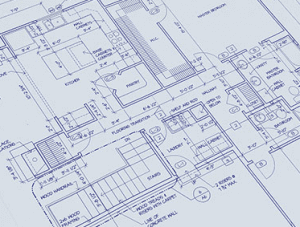
When developing construction plans, it’s important to work closely with your architect or designer. Don’t just hand the idea or concept to them and then sign the checks when the plans are done. Be a part of the process and learn about the plans as they are drawn. This will allow you to familiarize yourself with not only the plans but also the process of creating the plans. This will help you understand how to read them later. It is my opinion that knowing how to read your plans is the most important part of the construction process. Everything you need to know about the construction of your house is in those plans (or should be) and so a clear understanding of them is a huge first step.

Review the job site everyday. If you spend time on the site everyday you will be able to catch mistakes early. If a subcontractor makes a mistake, point it out immediately so that they can fix it without further delaying the process. That said, a very important point when contracting is to not hound the subcontractors as that will drive them crazy and slow them down in the end. Be willing to listen to what they have to say as some minor changes may be a good idea on site. Most of the details will have been worked out in the round table meeting, but some things are often not caught until the construction process begins. Do not give your subcontractors freedom to change things without first talking to you, but be open to their ideas.
Remember, they do this everyday and so may have some good ideas. This is another reason to know the details of the construction plans. Their idea may be great for them, but you have to consider how it will impact everyone else on the site. In other words, the plumber may love the idea of moving a wall 6″ over to allow him better access to a waste line, but that move may make the installation of a heating system impossible. That is an impact that is not worth moving the wall.
Again, knowing the plans inside out is the most important part of your job as the contractor. You can check out a YouTube series I created some time ago designed to teach people how to read construction drawings. It will show you all the ins and outs of reading plans and following the “detail path” through the construction set. Click here to watch the first video in the series and then follow the links to the rest of the series from there.


